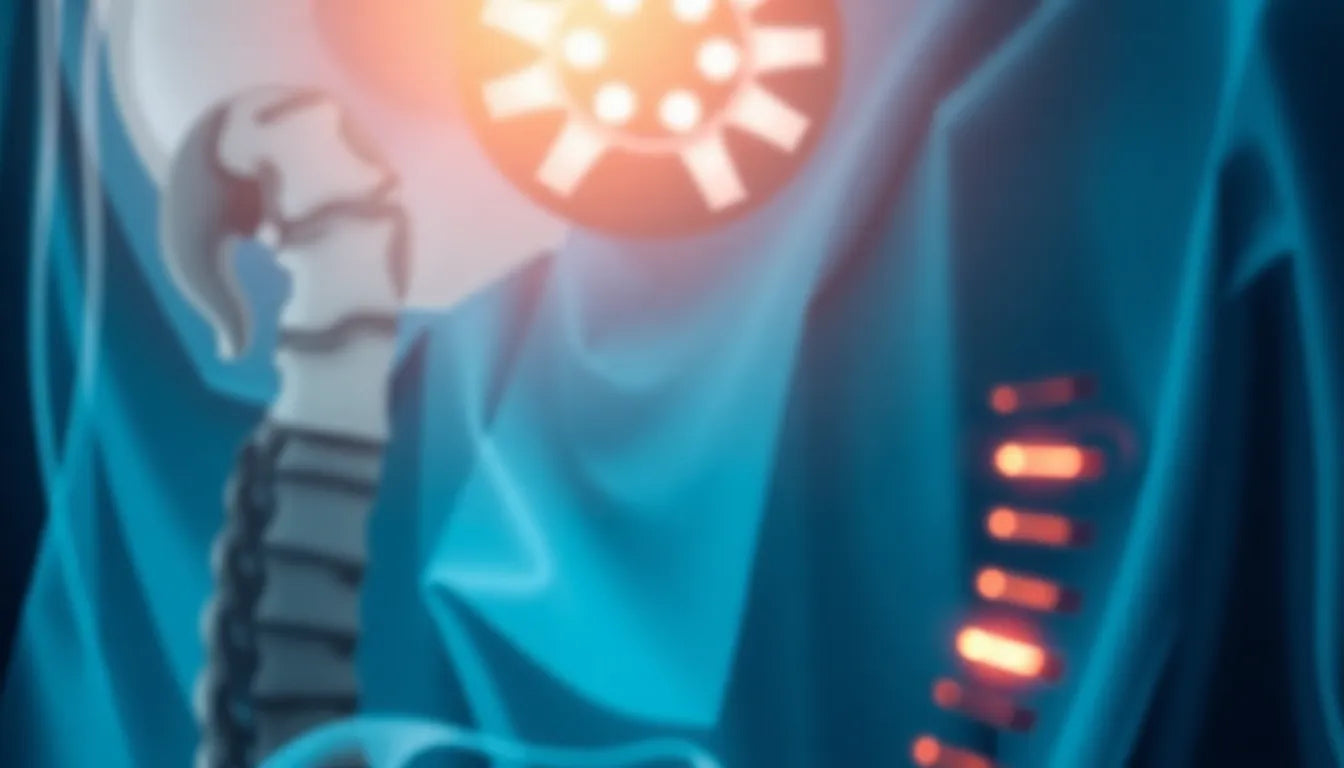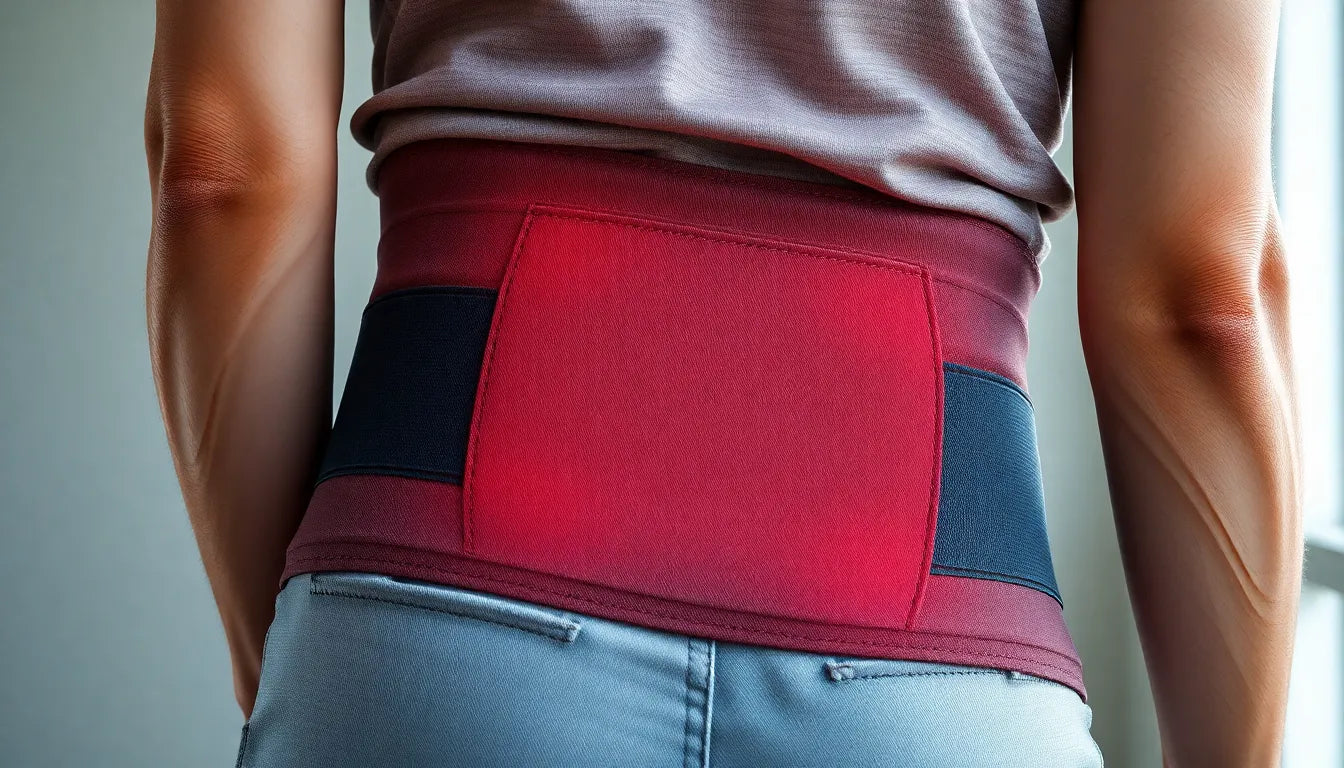Living with a herniated disc can be a challenging experience, often accompanied by persistent discomfort and pain. A herniated disc occurs when the soft center of a spinal disc pushes through a crack in the tougher exterior casing. This condition can lead to symptoms such as pain, numbness, and tingling in the back, neck, or limbs, significantly affecting one's quality of life. The importance of maintaining proper spinal alignment cannot be overstated, as it plays a crucial role in alleviating these symptoms and enhancing overall well-being.
understanding herniated disc discomfort
A herniated disc, also known as a slipped or ruptured disc, primarily affects the spine's cushioning system. The spinal discs act as shock absorbers between the vertebrae, and when one of these discs herniates, it can press on surrounding nerves, leading to pain and discomfort. This condition is most commonly seen in the lower back but can also occur in the neck. Symptoms vary depending on the location of the herniated disc and can include sharp pain, numbness, or weakness that radiates through the arms or legs.
Proper spinal alignment is essential for individuals suffering from a herniated disc. It helps reduce pressure on the affected area, thereby minimizing pain and discomfort. This is where the right mattress comes into play, as it can significantly influence how well your spine is supported during sleep.
the role of a good mattress
Choosing the right mattress is a critical step in managing herniated disc symptoms. A well-suited mattress can help reduce pain, improve sleep quality, and promote better spinal alignment. When selecting a mattress for a herniated disc, several key factors should be considered to ensure optimal support and comfort.
Firstly, the firmness of the mattress is crucial. A medium-firm mattress is often recommended as it provides a balanced combination of support and pressure relief. This firmness level helps maintain the spine's natural curvature while preventing the body from sinking too deeply into the mattress, which could exacerbate discomfort.
Additionally, the material of the mattress plays a significant role in comfort and support. Memory foam, latex, and hybrid mattresses are popular choices, each offering unique benefits. Memory foam conforms to the body's shape, reducing pressure points, while latex provides a more responsive feel, aiding those who change positions frequently. Hybrid mattresses combine the benefits of foam or latex with innerspring coils for enhanced support and pressure relief.
Ultimately, selecting the right mattress is a personal decision that should be based on individual needs and preferences. By considering factors such as firmness, material, and personal comfort, those with herniated discs can find a mattress that not only improves their sleep quality but also helps manage their symptoms effectively.
optimal mattress firmness for herniated disc relief
When selecting a mattress for herniated disc relief, firmness is a critical factor to consider. A medium-firm mattress, typically rating between 5 and 8 on the firmness scale, is often recommended by experts. This level of firmness provides an ideal balance between support and pressure relief, which is essential for maintaining proper spinal alignment. A mattress that is too soft may cause the body to sink excessively, leading to misalignment, while an overly firm mattress might fail to provide adequate contouring to the body's natural curves, potentially exacerbating discomfort.
exploring mattress materials and their benefits
The material composition of a mattress significantly influences its comfort and support characteristics, particularly for those with a herniated disc. Here are some popular options:
- Memory Foam: Known for its ability to conform closely to the body, memory foam mattresses provide excellent pressure relief by distributing body weight evenly. This helps minimize pressure points, which can be particularly beneficial for individuals experiencing nerve compression due to a herniated disc.
- Latex: Latex mattresses offer a responsive and slightly springy feel, making it easier for sleepers to change positions. This material is ideal for those who move frequently during the night, as it quickly adapts to new sleeping positions while still providing good support.
- Hybrid: Combining the benefits of foam or latex with innerspring coils, hybrid mattresses offer enhanced support and pressure relief. The coils provide a supportive base, while the top layers of foam or latex offer contouring comfort. Many hybrid models feature zoned support, which can be particularly advantageous for targeting lumbar support in herniated disc sufferers.
importance of pressure relief and spinal support
For individuals with a herniated disc, pressure relief and spinal support are paramount. A mattress that offers targeted support zones, particularly in the lumbar region, can help alleviate discomfort by ensuring the spine remains in a neutral position throughout the night. This reduces the risk of nerve compression and can significantly enhance sleep quality. Pressure relief is equally important, as it minimizes the strain on sensitive areas, promoting a more restful and pain-free sleep experience.
personalizing mattress choice by body type and sleep position
Choosing the right mattress also involves considering individual factors such as body type and preferred sleep position:
- Side Sleepers: Often benefit from a slightly softer mattress surface that allows for better contouring around the hips and shoulders, reducing pressure in these areas.
- Stomach Sleepers: Generally require a firmer mattress to prevent the midsection from sinking too deeply, which can lead to spinal misalignment.
- Back Sleepers: Typically find medium-firm mattresses most comfortable, as they provide the necessary support to maintain spinal alignment.
additional recommendations for better sleep with a herniated disc
Beyond selecting the right mattress, several additional strategies can help improve sleep quality for those with a herniated disc. Sleeping on your back is often recommended, as it promotes natural spinal alignment. Placing a pillow under or between the knees can further enhance this alignment, reducing strain on the lower back. Additionally, consulting with a healthcare professional can provide personalized advice tailored to your specific condition, ensuring you make the most informed decision possible.
considerations for mattress thickness
When choosing a mattress for herniated disc relief, thickness is another important consideration. An ideal mattress thickness typically ranges from 10 to 14 inches, providing a balance between cushioning and core support. This thickness range ensures that the mattress can offer the necessary comfort without compromising the structural support needed to maintain proper spinal alignment.
visual aids and interactive tools for mattress selection
When selecting the perfect mattress to ease herniated disc discomfort, visual aids and interactive tools can be invaluable in guiding your decision. Infographics can effectively illustrate key concepts such as proper spinal alignment, the benefits of different mattress materials, and optimal sleep postures that promote relief from herniated disc symptoms. These visual representations help simplify complex information, making it easier to understand how each element contributes to a more comfortable sleep experience.
Additionally, an interactive quiz or decision matrix can be a helpful tool for readers. By answering a series of targeted questions, individuals can receive personalized recommendations based on their specific needs, such as body type, sleep position, and firmness preference. This tailored approach ensures that readers are equipped with the knowledge to select a mattress that aligns with their unique requirements, ultimately enhancing their sleep quality and reducing discomfort.
addressing common concerns about mattress choices
When choosing a mattress for herniated disc relief, several common concerns often arise. One frequent question pertains to the debate between "hard" and "soft" beds. While some may believe that a firmer mattress offers better support, it's important to find a balance. A medium-firm mattress is generally recommended, as it provides the necessary support without being overly rigid, which could exacerbate discomfort.
The age and wear of a mattress can also impact its effectiveness in relieving back pain. An older mattress may have lost its structural integrity, leading to uneven support and increased pressure points. It's advisable to assess your mattress regularly and consider replacement if you notice sagging or discomfort, as a well-maintained mattress is crucial for optimal spinal support.
Lastly, consulting a healthcare professional is essential when dealing with a herniated disc. They can provide personalized recommendations and ensure that your mattress choice aligns with your specific medical needs, enhancing your overall well-being and comfort.
frequently asked questions
What type of mattress is best for a herniated disc?
The best mattress for a herniated disc is typically a medium-firm option, which offers the right balance between support and pressure relief. Memory foam, latex, and hybrid mattresses are popular choices, each providing unique benefits such as contouring, responsiveness, and zoned support.
Can a mattress really help with back pain from a herniated disc?
Yes, a suitable mattress can significantly alleviate back pain associated with a herniated disc. By providing proper support and pressure relief, a well-chosen mattress helps maintain spinal alignment, reducing discomfort and promoting better sleep quality.
How often should I replace my mattress if I have a herniated disc?
Generally, it's recommended to replace your mattress every 7-10 years. However, if you notice signs of wear such as sagging, lumps, or increased discomfort, it may be time for a replacement sooner, especially if you have a herniated disc.
What is the best sleeping position for herniated disc sufferers?
Back sleeping is often recommended for individuals with herniated discs, as it promotes natural spinal alignment. Using a pillow under or between the knees can further enhance alignment and reduce strain on the lower back.
Should I consult a doctor before choosing a mattress?
Yes, consulting a healthcare professional is advisable before selecting a mattress, especially if you have a herniated disc. They can provide tailored advice based on your specific condition, ensuring your mattress choice supports your health and comfort needs.
Sources
- Sleepopolis. "Best Mattress for a Herniated Disc."
- Turmerry. "Best Mattress for Herniated Disc."
- Mattress Insider. "Guide to Buying the Best Mattress for a Herniated Disc."
- Sleep Advisor. "Best Mattress for Herniated Disc (2025)."
- Amerisleep. "Best Mattresses for Herniated Discs."
- Sleep Advisor. "YouTube Review."


















